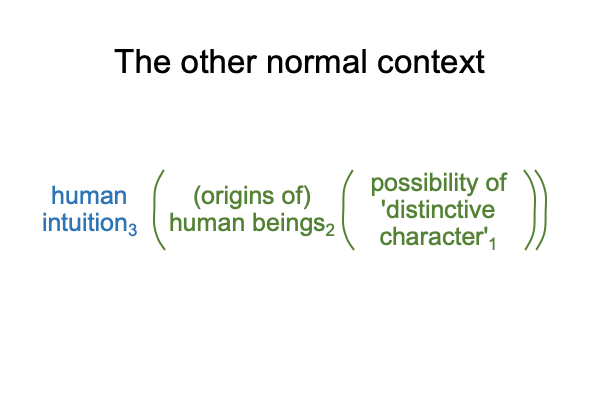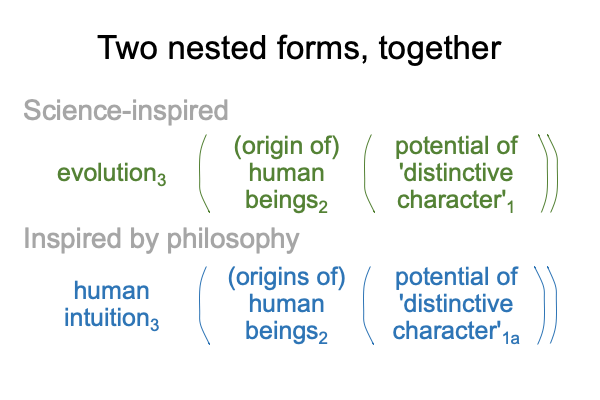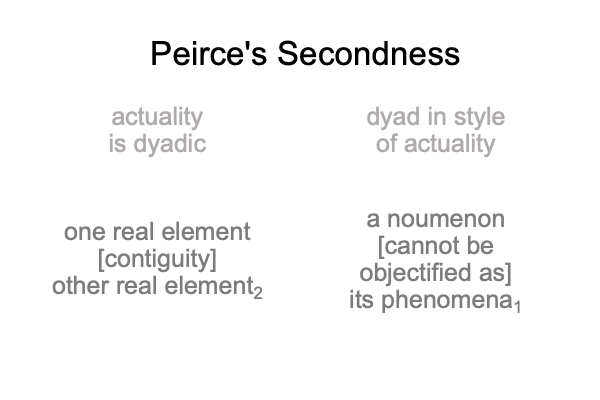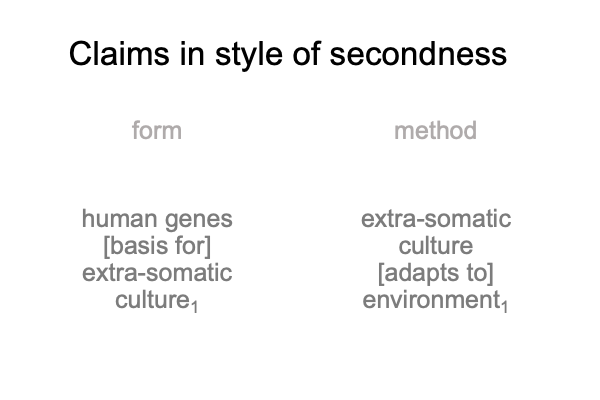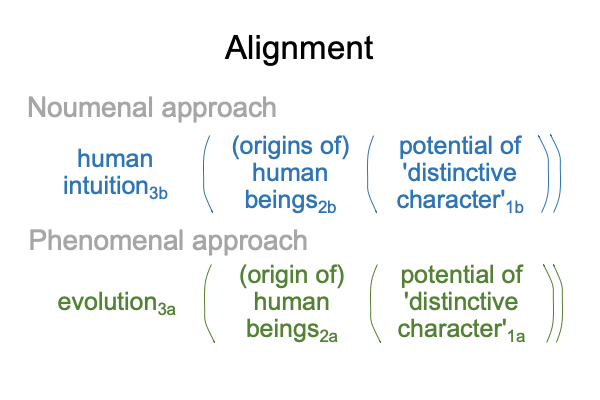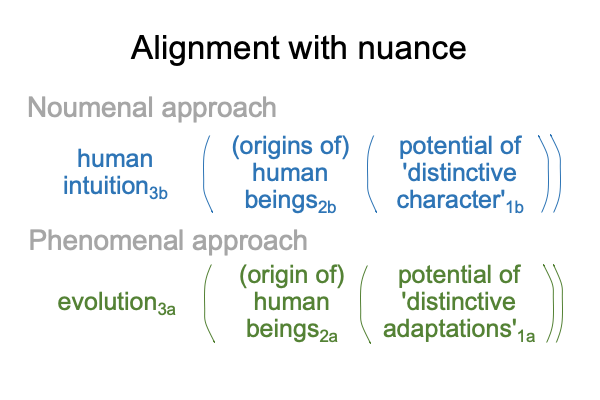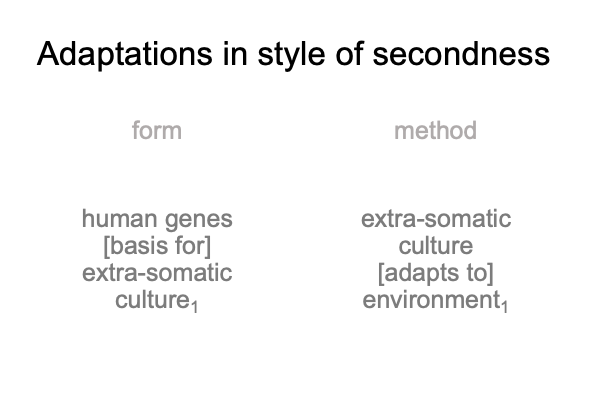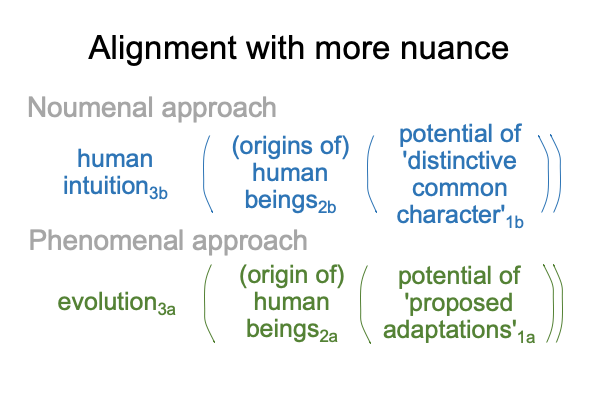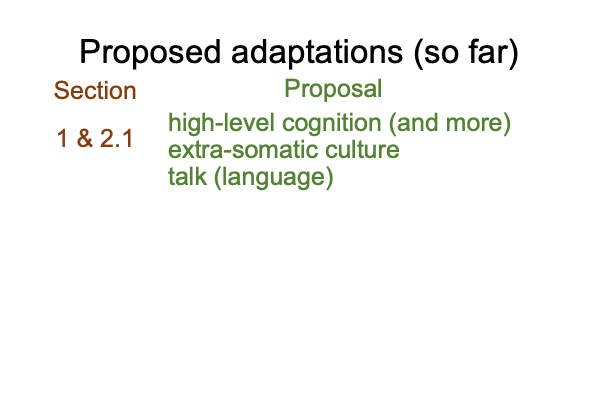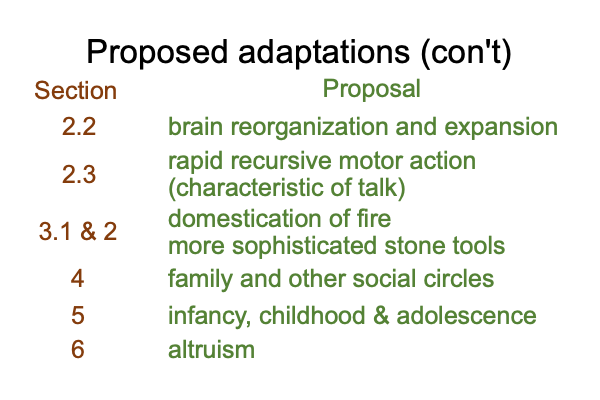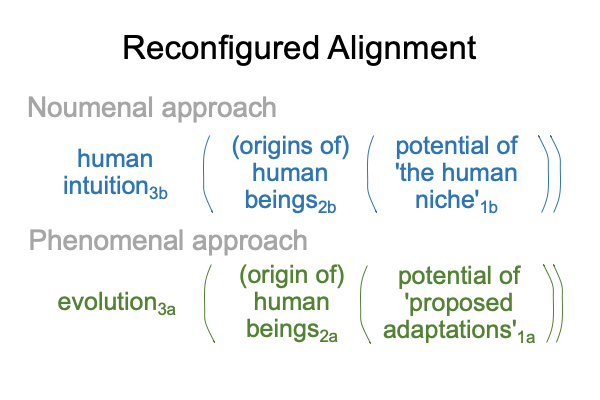Looking at Daniel Turbon’s Article (2020) “…Human Being in Evolution” (Part 1 of 11)
0001 Daniel Turbon, hailing from the University of Barcelona, publishes an article in the journal, Scientia et Fides(8(2)/2020, pages 65-94). The essay is available online. The full title is “The Distinctive Character of the Human Being in Evolution”. I place only the second focus in the header of my comments, while noting that the first character cannot be ignored.
0002 When I look at this essay, what do I see?
Does the title translate into a category-based nested form?
Here is a diagram, following the script in A Primer on the Category-Based Nested Form.
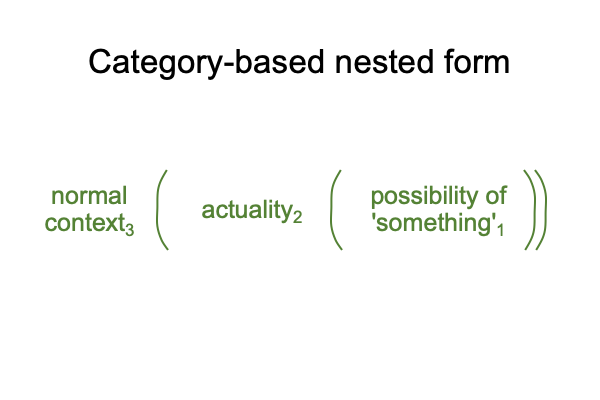
Figure 1
0003 Each of the above terms constitute an empty slot.
So, I ask, “How would words in the entire title correspond to the above empty slots?”
My answer is necessarily both speculative and synthetic.
The normal context3 is evolution3.
The actuality2 is (the origin of) human beings2.
The potential1 is a distinctive character1.
0004 The resulting application looks like this.
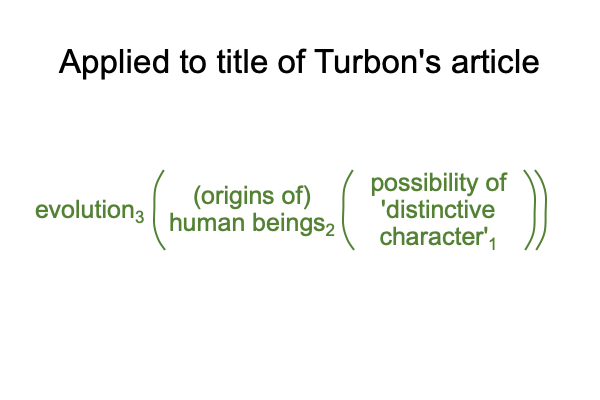
0005 The category-based nested form contains four statements. The fourth is paradigmatic: The normal context of evolution3 brings the actuality of the origin of the human being2 into relation with the potential of a distinctive character1.
When I read the title of Daniel Turbon’s article, this is what I see.

